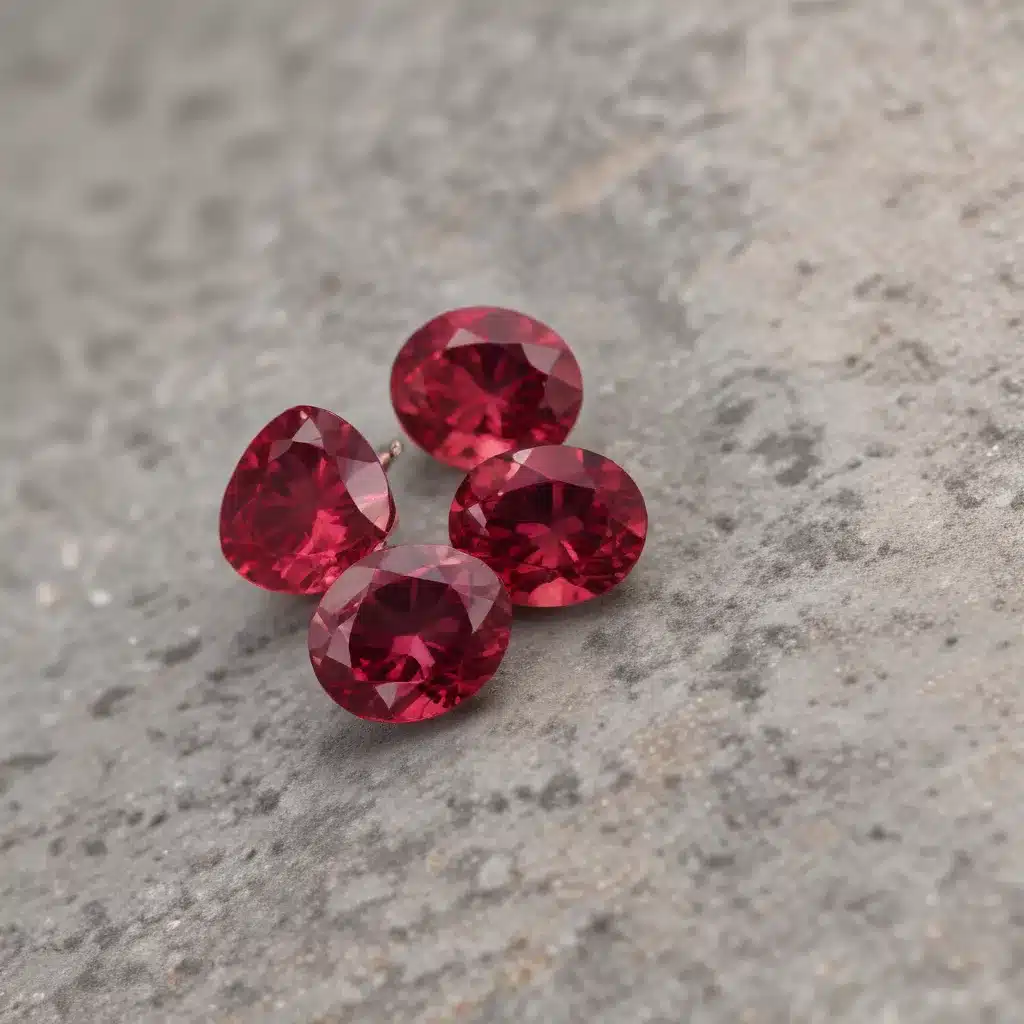
Rubies have long been revered for their vibrant, fiery hue and exceptional durability. This treasured gemstone has captivated the hearts of jewelry enthusiasts and collectors for centuries. However, the environmental impact and high costs associated with mining natural rubies have led to the rise of a more sustainable alternative – lab-grown rubies.
The Science of Lab-Grown Rubies
At the heart of a ruby lies a crystalline structure composed of the mineral corundum. This mineral, which also forms the basis for sapphires, is prized for its remarkable hardness, ranking 9 on the Mohs scale. The distinct red coloration of rubies is attributed to trace amounts of chromium present within the corundum crystal.
Synthesis Techniques for Lab-Grown Rubies
Replicating the natural formation of rubies in a laboratory setting is no easy feat, but advancements in technology have made it possible. Two primary techniques are used to cultivate lab-grown rubies: the flux-growth method and the hydrothermal method.
The flux-growth method involves dissolving alumina (aluminum oxide) and chromium oxide in a molten flux, typically a combination of metal oxides. As the solution cools, ruby crystals gradually form and can be extracted for cutting and polishing. This technique allows for precise control over the size and color of the resulting rubies.
The hydrothermal method, on the other hand, mimics the natural conditions under which rubies are formed deep within the Earth’s crust. By subjecting a nutrient-rich solution to high temperature and pressure within a sealed environment, ruby crystals can be grown layer by layer on a seed crystal. This process results in lab-grown rubies with exceptional clarity and uniform color distribution.
Chemical Composition and Properties
The chemical composition of lab-grown rubies is virtually identical to their natural counterparts, consisting primarily of aluminum oxide (Al2O3) with trace amounts of chromium. This similarity extends to their physical and optical properties as well, including hardness, refractive index, and dispersion.
In fact, the only distinguishing feature between lab-grown and natural rubies is the presence of subtle growth patterns or inclusions, which can be detected by trained gemologists using specialized equipment. These minor differences, however, do not affect the overall beauty and durability of lab-grown rubies.
Environmental Impact of Lab-Grown Rubies
One of the most compelling reasons to consider lab-grown rubies is their significantly reduced environmental impact compared to mined natural rubies.
Sustainable Gem Production
The process of mining natural rubies can be extremely resource-intensive and disruptive to fragile ecosystems. Vast tracts of land must be excavated, and the extraction process often involves the use of harmful chemicals and the displacement of local communities.
In contrast, lab-grown rubies are cultivated in controlled, eco-friendly environments, eliminating the need for destructive mining practices. By harnessing the power of advanced technology, gem laboratories can produce high-quality rubies without depleting natural resources or contributing to environmentally damaging activities.
Energy Efficiency in Laboratories
The energy required to grow ruby crystals in a laboratory setting is also considerably lower than the energy needed to extract and process natural rubies from mines. Sophisticated furnaces and hydrothermal chambers in gem labs are designed to operate efficiently, minimizing the carbon footprint of the production process.
Furthermore, the ability to precisely control the growth conditions allows for a higher yield of usable rubies, reducing waste and further enhancing the overall sustainability of lab-grown gems.
Comparison to Natural Rubies
While lab-grown rubies may lack the historical significance and sentimental value associated with natural gems, they offer a range of benefits that make them a compelling alternative for many consumers.
Visual Characteristics
To the untrained eye, lab-grown rubies are virtually indistinguishable from their natural counterparts. The precision of the synthesis process ensures that lab-grown rubies exhibit the same vibrant red hues, exceptional clarity, and mesmerizing brilliance as their mined counterparts.
Durability and Hardness
Both natural and lab-grown rubies share the same impressive level of Mohs hardness, ranking 9 on the scale. This exceptional durability makes them resistant to scratches, chips, and other forms of damage, ensuring their longevity as prized jewelry pieces.
Authenticity and Certification
To address concerns about authenticity, lab-grown rubies are often accompanied by detailed certification documents that confirm their origin and characteristics. These certifications, issued by reputable gemological laboratories, provide buyers with the assurance that they are purchasing a genuine lab-grown gem, not an artificial or synthetic imitation.
Market Trends and Adoption
The popularity of lab-grown rubies has been steadily increasing in recent years, driven by a growing consumer awareness of sustainability and the desire for more affordable luxury.
Consumer Preferences
As millennials and Gen Z shoppers become increasingly conscious of their environmental impact, the demand for ethically sourced and sustainable gemstones has surged. Lab-grown rubies, with their reduced carbon footprint and conflict-free origins, have become a preferred choice for these discerning consumers.
Pricing and Affordability
Natural rubies can be prohibitively expensive, with high-quality specimens fetching prices in the tens of thousands of dollars per carat. In contrast, lab-grown rubies are typically priced at a fraction of the cost, making them accessible to a wider range of jewelry enthusiasts and collectors.
Ethical Considerations
The mining of natural rubies has been linked to various ethical concerns, including labor practices, human rights abuses, and the displacement of local communities. By opting for lab-grown rubies, consumers can ensure that their jewelry purchases do not contribute to these unethical practices, aligning with their values of social and environmental responsibility.
As the gem industry continues to evolve, lab-grown rubies have emerged as a sustainable and cost-effective alternative to their natural counterparts. With their identical visual characteristics, exceptional durability, and reduced environmental impact, these lab-created gems offer a compelling choice for those seeking the timeless beauty of rubies without the high price tag or ethical concerns associated with mined stones. Whether you’re a seasoned jewelry aficionado or a first-time buyer, lab-grown rubies from Shelby Gem Factory are worth considering as a responsible and captivating addition to your collection.

